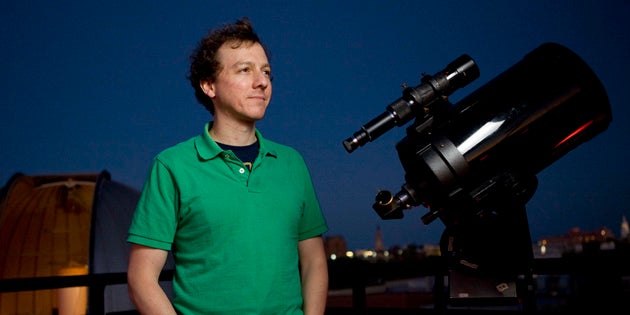College of Charleston astronomy professor Joe Carson is a superstar.
You might remember him from the College of Charleston Magazine article or inGenius! presentation about the planet he discovered in 2012 with two undergraduate students. Or maybe you remember that a beer was named for their discovery.
Now, Carson’s new research is on the cover of the October 2014 issue of the Astronomical Journal, one of the most prominent professional astronomy journals in the U.S. He also just won an InnoVision Award and funding for a completely different project. What he can do at the College of Charleston is boundless.
Carson and his research team won the InnoVision Technology Application Award for their innovative and low-cost diagnostic imaging tool that could help prolong or save the lives of cancer patients in Africa.
Kaposi’s Sarcoma (KS) is the most common type of cancer among men in Mozambique and imaging technologies are vital in identifying and monitoring tumors and legions caused by the disease. Traditional imaging tools such as MRIs and 3D ultrasounds can cost upwards of $3,000 per diagnosis. Carson and his team modified a $200 camera for hospital works to use to take images of the legions and send back to Carson for 3D imaging.
ARTICLE: Read more about the technology.
The InnoVision Awards are the only ones of their kind in S.C. and are the mark of distinction for outstanding leadership, innovation and technological excellence.
 Carson’s research featured in the Astronomical Journal offers a glimpse into the processes that likely occurred during our planet system’s formation and evolution.
Carson’s research featured in the Astronomical Journal offers a glimpse into the processes that likely occurred during our planet system’s formation and evolution.
“This investigation will help us better understand our own origins,” Carson explains. “Since we cannot go back in time to see how our solar system formed, we instead look at stars that are similar to our own young Sun, with planets forming and evolving out of the surrounding disk. In our images from the Hubble Space Telescope, after careful processing by our team, we see a wealth of disk structures such as gaps, perturbations, and assymetries, which we can only explain by the presence of resident planets.”





